YuJa to Highlight Innovative Ed-Tech Solutions at 2022 ATXpo Academic Technology Conference
YuJa is proud to be a Gold Sponsor for the Monday, Oct. 3, 2022 event. This year’s theme is “The Future of Academic Technology: Bridge the Gap Between Teaching, Learning, and Technology.” Members of the YuJa team will be sharing examples of innovative academic technology that makes it easy for institutions to consolidate disparate systems into a single, scalable platform that promotes in-classroom, blended, hybrid, online, and social learning.
“Although ATXpo participants represent many different fields, departments, and pedagogical approaches, the common thread is a dedication to improving teaching with technology,” the ATXpo conference website states.
“Although ATXpo participants represent many different fields, departments, and pedagogical approaches, the common thread is a dedication to improving teaching with technology,” the ATXpo conference website states.
In addition to keynote speaker Dr. Jeanae Cohn, the event will feature IdeaLabs to showcase practices, projects and technologies that support excellent teaching and learning; student and faculty panel question and answer sessions, and more.
LTI Compliant Lecture Capture for Seamless Lecture Capture and LMS Integration
Learning tools interoperability allows third-party tools to communicate and work within the structure of a compliant LMS, without the addition of special applications.
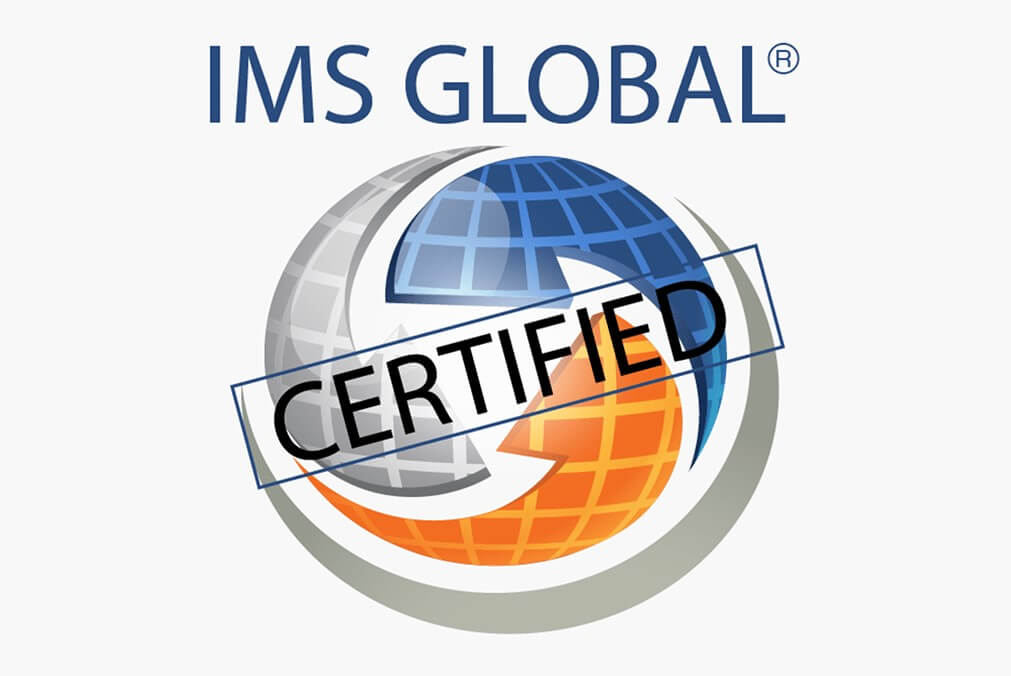 LTI integration simplifies the process of faculty lecture capture integration, as well as student access to lecture capture files.
LTI integration simplifies the process of faculty lecture capture integration, as well as student access to lecture capture files.
- LTI compliance increases the value of your investment in classroom technology, both in terms of your LMS and your lecture capture technology.
- LTI allows auto-generation of YuJa accounts in the LMS based on LMS user information, and it logs the user seamlessly into YuJa without the need to enter credentials.
YUJA IS FULLY COMPLIANT
YuJa is fully LTI compliant, making installation and access simple for users. YuJa offers an IMS-certified LTI 1.1, 1.3, and LTI Advantage LMS integration for all commercial LMS systems.
YuJa’s standard LMS integration for all commercial LMS platforms includes:
- IMS-Certified LTI Integration: We offer an IMS-certified LTI integration including provisioning of role, user, and course information.
- Gradebook Integration: IMS-certified LTI Gradebook integration and native Gradebook integration to automatically import video quiz assessment data.
- Media Chooser Extension for LMS-Embedding: Instructors can directly embed media within LMS pages, modules, announcements, discussions, assignments, and more. Content is deep-linked using the LTI Advantage specification to ensure data is accurately tracked.
- Single-Sign-On Crosslinking: Integration enables cross-linking capabilities with an institution’s Single-Sign-On provider across non-LMS enterprise systems.
Other Benefits:
LTI compliance makes it simple to access the features of YuJa, but offers a number of other advantages to users of both your LMS and YuJa:
- Integrate student information, including access rights, directly into YuJa from your LMS.
- Information from the LMS automatically transfers to YuJa, making setup simple.
- Create seamless access to lecture capture video.
- Offer instructors multiple lecture capture options, including with the YuJa appliance, YuJa software interface and YuJa web capture available through the familiar LMS
HOW DOES YUJA INTEGRATE WITH YOUR LMS?
“LTI compliant lecture capture makes lecture capture technology accessible and available through the LMS your faculty and students already know and use.”
YuJa relies upon LMS integration modules designed for common and widely used learning management systems. LTI compliant lecture capture makes lecture capture technology accessible and available through the LMS your faculty and students already know and use. YuJa meets the specifications to integrate with other compliant LMS systems without other technology.
Integrating YuJa into your LMS is a task for your IT department, but once it is in place, faculty can easily make YuJa available to students directly through the LMS. LTI integration makes the use of lecture capture technology seamless, both for instructors initiating capture in their classrooms and students who need to view lecture capture videos.
Manchester University Launches Site-Wide Lecture Capture Initiative with the YuJa Enterprise Video Platform to Deliver Cloud-Hosted Lecture Capture and Live Streaming Services
“More often today, the deployment of a seamless, comprehensive lecture capture platform is essential towards ensuring the academic success of university students whether they are learning remotely or in-person.” said Dr. Ajit Singh, Chief Executive Officer of YuJa Inc. “Our proud partnership with Manchester University provides the campus with the necessary digital learning tools needed to foster a transformative learning experience.”
With the implementation of the YuJa Enterprise Video Platform, faculty and students at Manchester University will have access to a comprehensive video platform that promotes a more active learning environment. As the campus enters its fall 2020 semester, the Video Platform provides its end-users with lecture capture capabilities, secure on-demand streaming, video engagement tools, and classroom recording tools.
Read the full release here.
About Manchester University
Manchester University offers more than 70 areas of undergraduate study, three master’s programs (accountancy, athletic training, and pharmacogenomics), a professional doctorate in pharmacy, and a dual degree in pharmacy and pharmacogenomics to about 1,400 students from 26 states and 19 countries. The independent, liberal arts school is located in North Manchester, Ind., where 73 percent of the students live on the 120-acre campus. Our four-year Doctor of Pharmacy program, as well as the athletic training and pharmacogenomics master’s programs, are on a Fort Wayne, Ind., campus.
Finding the Right Solutions for Your Virtual Events
Finding the Right Solutions for Your Virtual Events
1. Video Conferencing / Virtual Meetings
A video conference, also referred to as a virtual meeting, can consist of a small/medium-sized group of individuals who can interact and collaborate in a session. Such events are typically used for daily collaboration, and with the more people working and learning remotely, video conferences have slowly become the main use-case to replace in-person meetings.
Nonetheless, each organization is unique and operates differently. Your organization is provided with a wide range of features tailored to your organization’s needs including desktop sharing, real-time whiteboards, and group collaboration tools. These tools help account for scalability and account for the type of meeting that is conducted. A corporate meeting can benefit from a screen sharing capability to enhance a presentation, while a virtual tutoring session can benefit from a real-time whiteboard to help learners follow along and stay focused. Regardless of the purpose, effective video conferencing capabilities can ensure that viewers are not just listening, but can actively participate, as well.
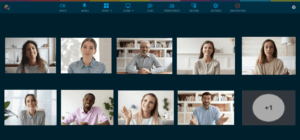

2. Live Streaming / Webcasting
Typically geared towards events with a larger audience, webcasts involve a larger audience with more participants listening compared to a video conference. A webinar, or webcast, typically involves a speaker, or small collective of speakers, delivering a presentation to a large audience that can submit questions or respond to polls.
Like virtual meetings, live streaming webcasts allow groups to collaborate in real-time and engage with the content. This unique, virtual event is often used for large scale presentations in a corporate environment, large presentations involving a speaker, or admission/graduation-related events in an education environment. An enterprise video platform with interactive live streaming capabilities can help your institution live stream to any audience size no matter the occasion.
3. Flipped Classrooms
In a flipped classroom environment, instructors incorporate blended learning aimed to foster student engagement and active learning in a remote setting. As many institutions continue remote learning operations indefinitely, online learning has become vital in ensuring that students are on course with their learning to prevent the coronavirus slide.
An Enterprise Video Platform offers features that not only reflect the in-person learning experience, but also includes collaboration tools to enhance the learning experience beyond the traditional classroom environment. Such tools include individual break-out rooms for group collaboration, in-video quizzing to ensure student engagement, raised-hands features to follow along, and a real-time whiteboard to annotate and engage with the learning material. Instructors can deliver interactive content for virtual office hours and online classrooms. Further, available solutions such as the YuJa Enterprise Video Platform offers LTI integration that can directly embed within your institution’s learning management system (LMS).
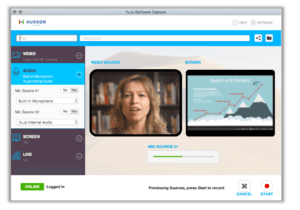
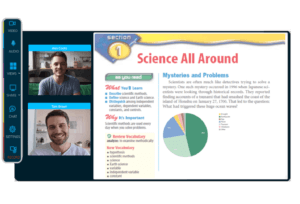
4. Virtual Classrooms
A secure virtual classroom platform enables instructors to create immersive educational experiences. In a virtual classroom, your institution can help set up instructor led-training, online classes, office hours, and tutorials right from your web browser. In fact, what is unique about virtual classrooms is that users can choose how they want to manage individual breakout rooms automatically or manually at any time. Students are also given the option to share their screens, draw and annotate live notes, and raise their hands without disrupting the instructor. These solutions ensure that your students can not only participate but are actively engaging with the material no matter where they are. An all-in-one virtual classroom solution offers your staff and students the closest experience to an in-person classroom.
While each of these virtual settings serve different purposes, an Enterprise Video Platform offers your organization all the flexible tools needed to serve any meeting, no matter the occasion. To find additional use-cases and potential solutions available to your organization, visit www.yuja.com to discover how YuJa’s portfolio of enterprise media and engagement tools can help your organization.
Related Article: Five Ways in Which a Corporate Video Platform Can Promote Employee Engagement
The Value of Zoom Integration with the YuJa Enterprise Video Platform to Manage Zoom Recordings
The Value of Zoom Integration with the YuJa Enterprise Video Platform to Manage Zoom Recordings

The YuJa Enterprise Video Platform is an all-in-one video experience designed to securely create, manage, and share video content across any device. Zoom Connector for syncing meeting recordings enables automated upload of video conferences held and recorded through the Zoom platform.
Normally, recorded meetings are saved to be disseminated among colleagues, replayed, or stored for reference. As teams continue to work remotely around coronavirus-related developments, the number of recorded meetings are expected to rise. However, due to large file sizes, the process of sharing a meeting recording is unlike that of sharing a regular email. With limited administrative controls over cloud recordings, this limitation can pose a security risk to sensitive recorded assets.
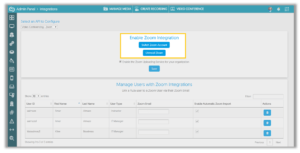
The Zoom Connector for the YuJa Enterprise Video Platform enables organizations to sync their Zoom meetings recordings into their secure, cloud-hosted YuJa system. With the inclusion of permission settings, Zoom recordings can be disseminated securely and viewed across any device. Sync-ed recordings are also automatically captioned and indexed for improved search-inside-video capabilities.
Zoom Integration with the YuJa Enterprise Video Platform allows for:
- Import Recordings – Import Zoom recordings as playable videos
- Share Recordings – Share recordings among faculty, colleagues, classes, or groups.
- Caption & Tag – Supports auto-captioning, metadata tagging, word-clouds, and more.
- Multi-faced Search – Ability to search specific recordings by user and data ranges.
- Auto-Link Accounts – Connect a YuJa user to a Zoom user for automatic import of Zoom recordings.
- Video Editing – Enable multi-stream, non-destructive editing of content for your user’s most essential video and audio editing workflows.
- Set Permissions – Grant certain individuals specific access to meetings recordings
- Engagement Analytics – Access to recording viewing and engagement analytics.
The Zoom Connector for the YuJa Enterprise Video Platform is available for install in the Zoom Marketplace. If you are an administrator looking to integrate with Zoom, this step-by-step guide will provide instructions on how to enable Zoom Integration in the YuJa Enterprise Video Platform. Once you have successfully completed the integration, users can utilize this additional guide on how to access various integration options, manage users, and manage Zoom meetings.
Related Article: Promoting Active Learning in a Remote Learning Environment
How to Enhance Your Lecture Recording Quality
With more distance-based learning comes the need to produce quality recordings to distribute across your Learning Management System (LMS) platforms to your students. Instructors are expected to ensure quality information being presented that can be easily seen and heard.

How to Improve Your Lecture Recording Quality

1. Quality Content to Enhance Lecture Recordings
At first glance, instructors new to the flipped classroom environment tend to resort to public resources – such as YouTube – to store and share their video content. However, the lack of a centralized video management system can create a confusing experience for students who are left wondering where certain content is being stored for multiple courses in different locations. By resorting to public locations to store content, this can lead to instructors facing multiple security and copyright issues if stored information is improperly disseminated across public domains.
Factors to look out for to ensure quality lecture recordings.
- Less “Fat.” Details can help you articulate your main point and help drive your argument home. However, redundant information and jargon can make your content harder to digest. Ensure your recordings are straight to the point.
- Text Overload. In the event your lecture recording also has text presented, students will naturally read those words. As a result, large text blocks and bulleted lists will force students to inefficiently multi-task. Reducing the amount of text per slide can help students focus more on listening and less on typing.
- Proper Flow. Divide each point into their respective slides and ensure that your presentation isn’t too rushed or too slow. This improves the flow of lecture presentation and ensures that students won’t need to constantly rewind or fast-forward the recording.
2. Visual Quality Improvements
While lighting remains of the easiest alterations you can make to improve recordings, poor lighting can instantly detract viewers from the learning experience if left mistreated. Consider the addition/removal of various lighting sources to ensure a clear and natural display for your viewers.

Factors to consider when improving visual quality.
- Lighting Optimization. If your presentation appears too dark or bright, consider opening/closing a window to provide some natural light. Note that any lighting source should be in front of you and not directly behind you within frame. This can cast unnatural shadows and cause your face to be dimly lit.
- Camera Placement. Even in a flipped classroom setting, the importance of eye contact towards your audience is essential in retaining viewer focus. Place your camera a few inches above eye level to ensure that you can easily look at your audience. Further, a camera placed slightly above eye-level produces a more flattering, less-awkward view of the presenter.
- Check your surroundings. Pay attention to all objects placed within the camera’s view. Ideally, a background free of visual clutter will prevent the viewer from getting distracted. Use solid-colors for your backdrop and remove any miscellaneous items within frame; that way, your audience will be focused on only you.
3. Audio Quality Improvements
Like visual quality, it is important to ensure that your audience is actively listening to your material as well. Contributing factors such as auditory distractions and repetition can cause your audience to tune out of your content and or result in confusion.
Factors to consider when improving audio quality.
- Clear Sound. No one likes choppy or distorted audio. The addition of another microphone can enhance the listening experience so that viewers can clearly hear your presentation. Consider using a Lavalier microphone as it allows for users to walk around during their presentation in case you have an additional whiteboard to display.
- White Noise. Outside noise can be distracting even without your knowledge that it exists. Avoid standing near running machines or oscillating fans during your recordings. While it might not generate much noise in person, your microphone might pick up the humming significantly louder in a recording. Run a quick test footage before recording to prevent this occurrence.
- Outside Noise. Prior to recording, consider closing any doors or windows in your recording studio to prevent any outside noise from interrupting your recordings.
Related Post: How to Record Lecture Videos
Student Lecture Capture Priorities
Maximizing the Investment in Lecture Capture Technology
In order to understand student priorities with regard to lecture capture, it is important to consider the different ways students use lecture capture technology.
- In a traditional classroom, students may use lecture captures for study and review, to reduce confusion and increase understanding, and to catch up on missed classes.
- In a hybrid learning environment, lecture captures are often watched before class, freeing up in-class time for other activities and hands-on learning.
- In an online course, lecture captures provide instruction, engagement, and information.
An ideal lecture capture solution facilitates learning in all of these situations, and meets the needs of students in each.
Understanding Student Priorities
Regardless of the learning environment, students share many of the same priorities with regard to lecture capture.
Quality and Flexibility
Today’s students expect more than just a grainy recording; they expect access to high-quality audio and video recordings. Lecture capture technology needs to support a variety of inputs, including audio and video sources, as well as high-definition recording.
In addition, students want to be able to adjust the playback speed of lecture capture content. This provides the ability to move through a lecture at a pace best suited to the individual, and is an effective tool for study and review.
Searchability and Notetaking
In order for students to use lecture capture content effectively, they need to be able to find the lectures they need, and to find content included in the lecture. Search features are essential for students, and should incorporate a variety of search tools, including:
- Title
- Tags
- Slide content
- Captioning
In addition to being able to search both course and individual video content, students also want to be able to take notes from within the lecture capture interface. For the most effective study option, students should be able to download their notes alongside relevant slides from the lecture capture.
Accessibility and Mobility
College students today have a variety of different learning styles, as well as learning challenges. Accessibility features not only provide legally required Section 508 Compliance, but help students to learn and engage. Effective captioning, audio descriptions, and keyboard shortcuts help to support student learning.
Mobility is also a high priority for students today. Many students are busy and need the ability to watch lecture capture content from a mobile device, like a tablet or smartphone. They also appreciate the ability to download video content for offline viewing, or to download audio-only podcasts for review.